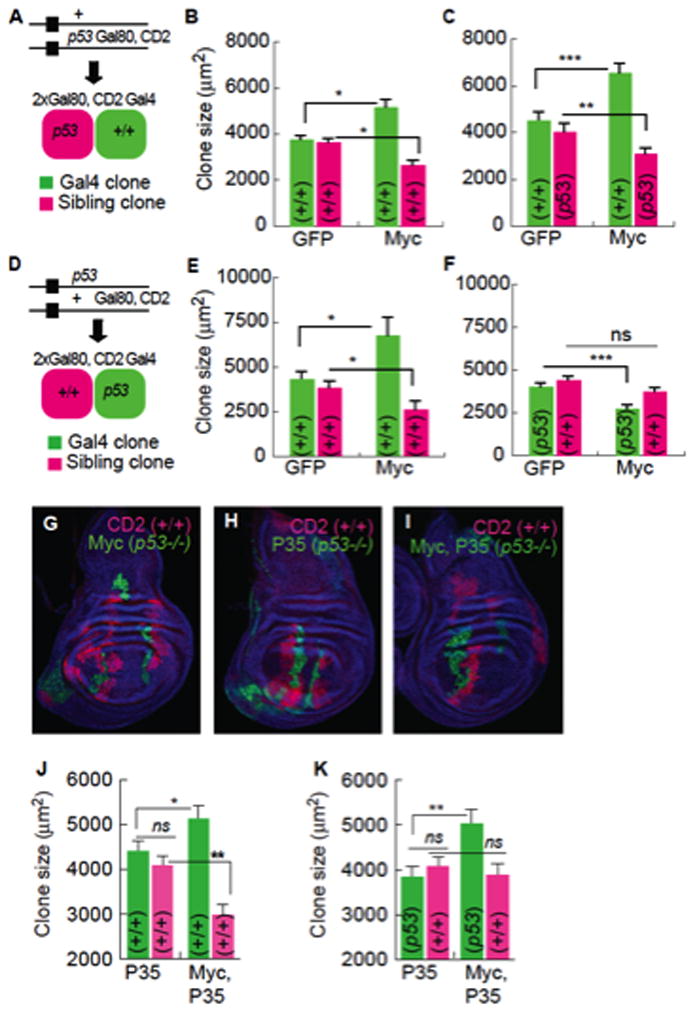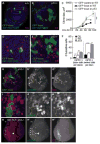
| PMC full text: | Cell Metab. Author manuscript; available in PMC 2015 Mar 4. Published in final edited form as: Cell Metab. 2014 Mar 4; 19(3): 470–483. Published online 2014 Feb 20. doi: 10.1016/j.cmet.2014.01.012 |
Figure 6

A–C. MARCM experiments in which sibling clones are p53 mutant. Error bars in this figure are SEM.
A. Scheme showing progeny generated by mitotic recombination. The p53 mutation segregates with Gal80 and CD2, yielding p53 mutant sibling clones.
B. Gal4, Myc clones compete against WT sibling clones and grow larger than Gal4 control clones.
C. WT Gal4, Myc clones compete against p53 mutant sibling clones.
D–F. MARCM experiment in which Gal4 clones are p53 mutant.
D. Scheme showing progeny generated by mitotic recombination. The p53 mutation segregates away from Gal80 and CD2 yielding p53 mutant Gal4 clones and WT sibling clones.
E. WT clones, as in B.
F. p53 mutant Myc-expressing Gal4 clones are significantly smaller than controls.
G–I Wing discs with MARCM clones of the indicated genotype. P35 is expressed in Gal4 clones (green) in I. All sibling clones (magenta) are WT, and blue cells are p53/+ (phenotypically WT).
J. P35 expression in the Gal4 clones does not affect competition between Gal4, Myc clones and WT sibling clones.
K. Inhibition of cell death of p53 mutant, Gal4, Myc clones allows them to grow equal to WT Gal4, Myc clones, but they are not competitive.






